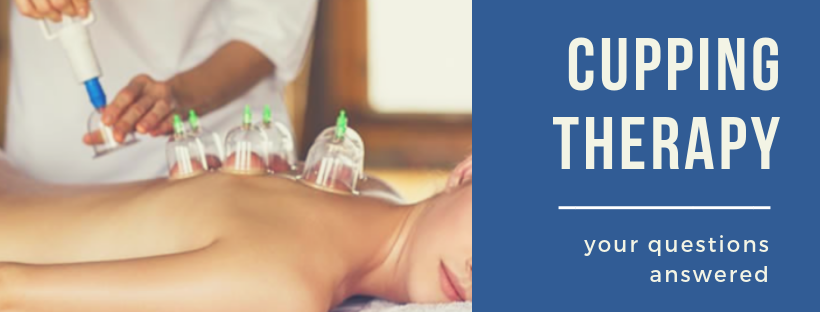Cupping Therapy FAQ

Answers to common questions about Cupping Therapy, our newest specialty treatment!
Cupping is a versatile treatment that is offered by many different practitioners. At Anatomica, Cupping Therapy is performed by our Registered Acupuncturist and several of our Registered Massage Therapists, as well as one of our Chiropractic doctors.
What is Cupping?
Cupping therapy is an ancient technique that was applied to treat an array of illnesses. Used for centuries, its popularity continues to grow as people seek alternative and natural methods for treatment. Silcone or glass cups are used to suction soft tissue, and it is this vacuum effect, or negative pressure, that produces a therapeutic result.
What does Cupping do?
Qualified therapists use cups to distract congested tissue, release trigger point and myofascial restriction, and to reduce pain and stiffness.
Is Cupping a Massage?
If you book Cupping Therapy with one of our Registered Massage Therapists, they will also use Swedish techniques before and after the cupping application in order to warm up and flush out the tissue. You will be comfortably draped by sheets and a blanket throughout.
Different types of Cupping Therapy
At Anatomica, cupping therapy is offered by several different practitioners. We offer
- Cupping Massage Therapy by RMT
- Acupuncture Cupping and TCM Manual Therapy
- Chiropractic Cupping (with or without adjustments)
Is Cupping covered by Insurance?
Yes! At Anatomica, we offer direct billing for cupping therapy on most major insurance plans. Cupping is offered by several different types of practitioners. Cupping Therapy is covered by insurance when performed by a qualified Massage Therapist, Acupuncturist, or Chiropractor as part of your treatment plan at Anatomica.
Key Benefits of Cupping Therapy:
- Increases circulation
- Promotes relaxation
- Increases range of motion
- Decreases muscle tension
- Breaks down fascial restrictions, scar tissue and adhesions
- Encourages healing and immunity
- Encourages lymph drainage
- Aids respiratory system
Conditions Treated with Cupping Therapy:
Cupping therapy has reported benefits in the treatment of lower back pain, neck and shoulder pain, headache and migraine, knee pain, facial paralysis, brachialgia, carpal tunnel syndrome, rheumatoid arthritis, and asthma. [1]
Cupping Therapy is a useful treatment for a variety of conditions, including:
- Scar tissue
- Contusions
- Tension headaches
- Strains/sprains
- Whiplash
- Edema
- TMJ dysfunction
- Bursitis
- Tendonopathy
- Plantar fasciitis
- Frozen shoulder
- Chronic bronchitis, Asthma
- ITB contracture
- Scoliosis
- Hyperkyphosis/hyperlordosis
Is Cupping Painful?
Cupping should not cause pain, and it’s important to speak up if you find the Cupping therapy painful. Your therapist will check in with you throughout the treatment to make sure you are comfortable. You can expect about the same amount of pressure/discomfort as you may feel during a deep Swedish massage or other myofascial-therapy treatment. After treatment, the cupping marks may be tender to the touch.
Are there side effects of Cupping?
Cupping leaves red, circular marks that can look like bruises (but are not usually painful) These are caused by the increased circulation that the cups draw into the layers of the skin, and they usually last for around one week, sometimes a bit longer. Stay away from hot showers, baths, or saunas for 2 hours before and 2 hours after the treatment to limit the potential for severe reaction, skin damage, and inflammation. As with other manual treatments, some people with lower blood pressure may experience fatigue, dizziness or light-headedness following the treatment. Care should be taken to get up slowly after cupping.
How long do the cups stay on?
Cupping therapy includes static placement of the cups and as well dynamic distraction while the therapist moves them around particular areas. Cups generally don’t stay on one spot longer than 15 min, and can be removed sooner if there is any discomfort.
How long is a Cupping appointment?
Depending on your preferences, cupping therapy can be booked as part of a massage therapy, chiropractic, or acupuncture session. Appointments for cupping therapy can vary from brief to comprehensive, and generally patients enjoy 30-60 minutes of total treatment time.

